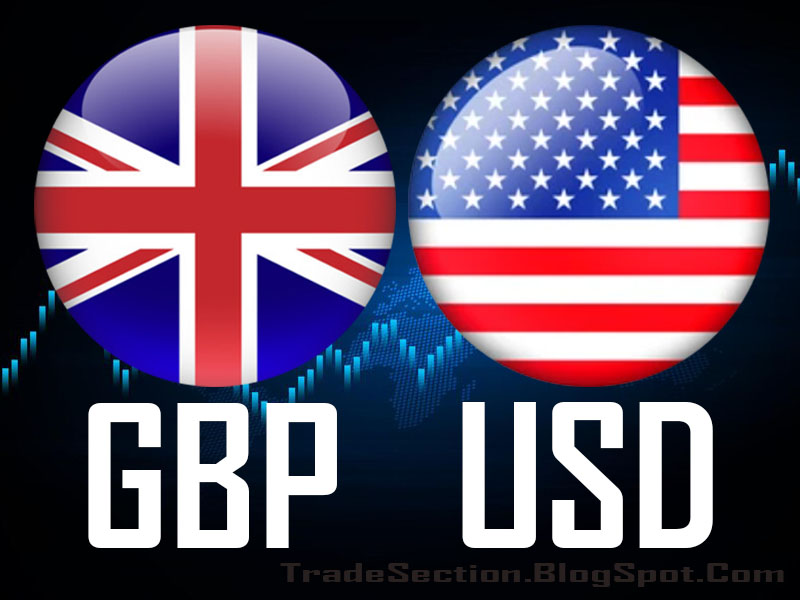⚠️ Alert: New Buy Signal Spotted on GBPUSD
Fundamental Outlook for GBPUSD
GBPUSD Fundamental Analysis suggests the pair remains under pressure amid conflicting signals from global economic dynamics. Recent dovish expectations surrounding the Federal Reserve, which have historically weakened the U.S. Dollar (USD), appear to be overshadowed by the resurgence of U.S.-China trade tensions. Despite President Trump’s tariff threats acting as a catalyst for risk-off sentiment, GBPUSD has struggled to find consistent support, trading near 1.3345 during the Asian session. This indicates that while lower-for-longer interest rate policies in the U.S. might typically benefit the Pound, the USD’s recent strength—driven by geopolitical uncertainty—has countered this narrative. Additionally, the broader risk-on environment linked to dovish Fed bets has not translated into a sustained rally for GBP. Instead, the pair seems to be reacting to macroeconomic crosscurrents, such as the continued weakness in commodity currencies against the USD, which may divert capital to safe-haven assets like the dollar. However, the positive bias noted in GBPUSD Price Forecast analyses points to a potential recovery above the mid-1.3300s, a key psychological barrier and the 38.2% Fibonacci retracement level, which traders are likely monitoring for a reversal. This phase of GBPUSD Trade Analysis underscores the need to track evolving geopolitical developments and Fed policy cues, as they may redefine the pair’s trajectory. For now, GBP/USD’s fragile position highlights the duality of factors influencing its direction, with trade tensions and central bank positioning playing pivotal roles in determining its next move. For real-time updates, investors can refer to FXStreet’s latest analysis on GBPUSD’s Weekly Forecast, which details the pair’s recent breakdowns and potential catalysts for a rebound.
GBPUSD Technical Analysis reveals that the pair is currently testing critical levels in a volatile market environment. With GBPUSD hovering near 1.3345, the immediate focus is on the 1.3350 threshold, which has acted as a short-term resistance level. The recent advance above the mid-1.3300s, despite the pair’s broader decline, suggests traders are positioning for a potential bounce around the 38.2% Fibonacci retracement level, a commonly referenced technical indicator for identifying key support or resistance. If GBPUSD successfully holds above 1.3300 and breaks through the 1.3350 area, it could signal a shift in momentum toward the 1.34320 target, aligning with the GBPUSD Trade Signal entry at 1.33362. However, the presence of a sell stop at 1.32580 highlights the risk of further declines if key support levels are breached. This interplay between technical and fundamental drivers is critical: while the USD’s strength against GBPSTEM is tied to trade tensions and risk-off flows (as outlined in GBPUSD Fundamental Analysis), technical indicators like the Fibonacci levels may act as floors for potential reversals. The GBPUSD Trading Forecast should now closely monitor the 1.3350 level as a pivotal point—breaking above could validate the bullish scenario, whereas a fall below might extend the bearish trend. Combining this with the current GBPUSD Trade Signal setup, traders should approach positions with caution, considering the balance of macroeconomic risks and technical confirmation. This delicate equilibrium between GBPUSD Technical Analysis and Fundamental Analysis exemplifies the complexity of forex markets, where timing and conviction in trade execution are paramount.
The GBPUSD Live Trade scenario is shaped by the ongoing tug-of-war between U.S. monetary policy and geopolitical factors. The dovish stance of the Fed, which has kept the USD in check, contrasts with the elevated uncertainty from U.S.-China trade friction, creating a mixed outlook for the pair. This divergence is evident in GBP/USD’s recent behavior, where it has oscillated between testing key Fibonacci levels and reacting to broader USD flows. The 1.33362 entry point, poised just below the 38.2% Fib level, capitalizes on the potential for a breakout if the U.S. Dollar faces renewed headwinds. Conversely, a sharp decline to 1.32580 could indicate that the USD remains resilient, undermining the bullish case for GBP. Analysts from FXStreet have emphasized the importance of watching for a sustainable move above 1.3300 to assess whether the GBP can reclaim momentum, a development that would directly influence the GBPUSD Trade Analysis for the coming sessions. In the absence of clearer Fed guidance or a resolution in trade disputes, GBPUSD is expected to remain range-bound, with the 1.3300-1.3400 corridor becoming a battleground for bullish and bearish traders. As such, the GBPUSD Trade Signal of 1.33362, 1.34320, and 1.32580 encapsulates a high-risk strategy, requiring traders to balance fundamental convictions with precise technical triggers. This GBPUSD Trading Forecast underscores the need for vigilance, as even minor shifts in policy rhetoric or geopolitical events can rapidly alter the pair’s sentiment and direction.
GBPUSD Technical Perspective – Signal Breakdown
Price action recently formed a swing low (bottom) at 1.32580. Since then, the market has reversed and is now trading near OVERSOLD RSI levels, often seen as a signal of potential upside momentum.
The current 15-minute price structure is forming a clean sequence of higher highs and higher lows, validating directional strength. This setup meets our criteria for momentum-based trade signals.
This setup is ideal for intraday and swing traders looking for high-probability entries. The confluence of RSI, SMA100 breakout, and ATR compression increases the reliability of this signal.
✅GBPUSD Strategy Overview – Buy Signal Details for Traders
- Symbol: GBPUSD
- Trade Direction: Up
- Entry Level: 1.33362 or Better Deal
- Target: 1.34320
- Risk Level (SL): 1.32580
- Risk Analysis:0.5% of equity or adjust accordingly
- Arrival Time: 2025.10.13 10:31
📝 GBPUSD Signal Guidelines & Risk Advice
- Consider a stop-limit order if you expect sudden spikes during London or New York sessions.
- Follow strict trade risk management — do not exceed 1% equity exposure on this trade idea.
- Ensure tight spreads and low slippage — especially important for short-term trades like GBPUSD.
- Only enter the trade when price reaches or improves upon the Entry Price.
"Consistency in process beats brilliance in prediction."
Caution: While this GBPUSD setup may align with our trading plan, outcomes are never guaranteed. Risk control is critical.



0 Comments